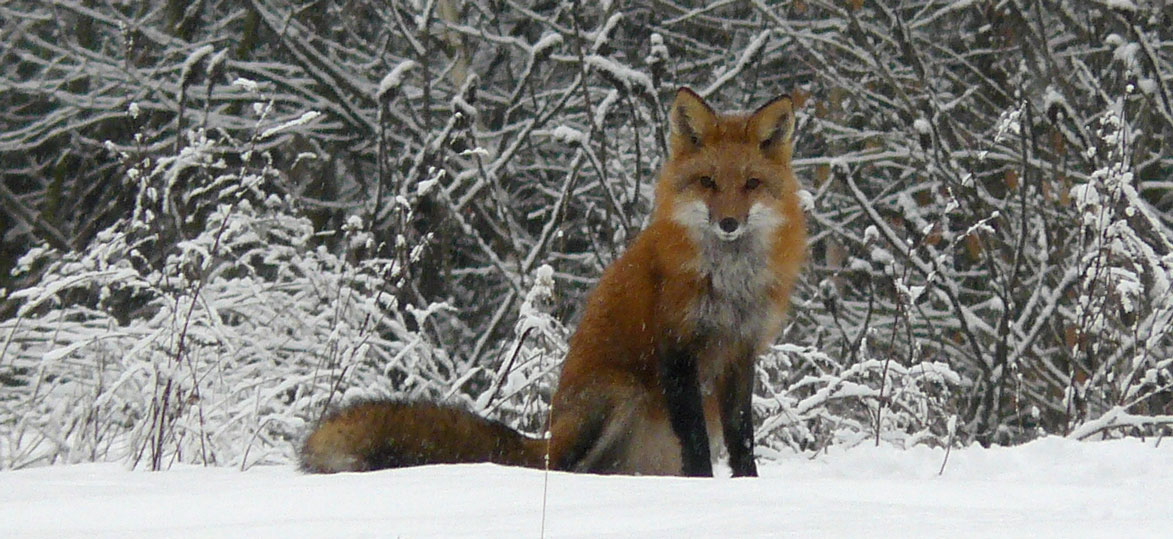
The origin of the red fox (Vulpes vulpes) in Vermont is uncertain. Some historical records suggest the species was absent from much of our state at the time of European settlement. Recent genetic analysis shows that native red foxes expanded down the east coast from Canada and portions of northern New England as agricultural land use became more common. European settlers also introduced old-world red foxes along the eastern seaboard. Today, the red fox is an important mid-sized predator in Vermont’s ecosystem.
In comparison, the red fox is slightly larger than the gray fox and it occupies a wider range of habitats. Hunted and trapped for its coat, it's a popular furbearer.
Habitat
The red fox utilizes a wide variety of habitats. It prefers a mixture of forest and open areas and heavily uses the transition areas (called edge) between them. It also requires a suitable den site, which may be one it has dug or an existing burrow of another animal, possibly a woodchuck's that can be reused. Dens can be used year after year and often are connected to resting and feeding grounds by a system of pathways. The red fox is crepuscular, meaning it is most active at dusk and dawn, but will forage during the daytime as well. The male and female remain together during the year to help raise the young. Unlike the wolf, the red fox does not form packs.
Reproduction
The breeding season of the red fox varies with latitude within its geographic range. In Vermont, it commonly breeds late January through February. The males will exhibit signs of aggression during the breeding season, fighting other males for establishment of territories and vying for the female's attention.
Females often mate with more than one male but will form a partnership with only one. In preparation of the birth, the female remains in or near the den. The male red fox assists the female by providing her with food.
After a gestation period of 49 to 53 days, the litter is born, ranging in size from one to 13 pups with five as the average. At birth, the pups weigh only about 100 grams, are blind and completely dependent on their mother for survival. Nine to 14 days after birth, their eyes begin to open, and after five weeks, they explore outside of the den. By the time they are ten-weeks old, they are weaned off their mother's milk and are capable of obtaining food for themselves.
The mother and pups stay together until the young reach sexual maturity at about ten months. The red fox breeds once a year.
Diet
The red fox is an omnivore, feeding on small mammals, birds, woodchucks, insects, eggs, carrion (dead animals) and also fruits and berries. It can be a nuisance because it will occasionally prey on domestic cats, poultry, lambs, young pigs and young goats.
The red fox primarily feeds on rodents. It can often be seen standing still in a field, listening for any movement. When it detects food, it will leap high in the air and pounce on top of the rodent. It also caches surplus food that it can relocate with its excellent memory. The red fox has an excellent memory for locating its stored food provisions.
Management
The red fox population is monitored closely to regulate hunting and trapping limits. It is protected from over hunting with the season only lasting two months, from the end of October through the second Sunday in February. This time of year is chosen to protect against mothers or newborns being harvested.
Status
The red fox is fairly common throughout its range and is abundant in its preferred habitat in Vermont. Its population can experience dramatic declines in number when hit by diseases, such as rabies, but can recover quickly.
